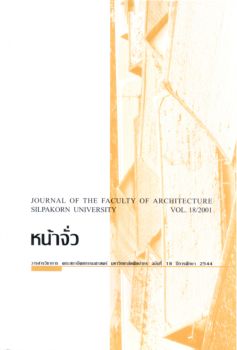Fearin the Contemporary Thai Domestic Space
Abstract
The Thai domestic architecture has been a subject of study by many Thai scholars, however, the discourse of domestic architecture has been limited to the functional and structural understanding within its traditional context, i.e. the meaning of its ideological and symbolic representation. (Jaijongrak, 1973; Chanthavilaswong, 1988; Themiyabanda, 1995) Very few researches have been carried out on the domestic space and architecture in the Thai contemporary context. (Thevakul, 1999)
This paper concerns precisely on the contemporary domestic space in relation to the notion of “fear and danger' within the psyche of the modern home dwellers in urban area. In the Thai traditional context, house was ritualized through the ‘ritual of house building.” Those traditional aspects, for the purpose of the paper, are recognized as defenses against fear; the fear of the supernatural powers and beings. The traditional defenses provide assurance to the Thais, and ensure that the house is an auspicious domain for common dwelling.
The main question of this paper is what extent to which the traditional sanctities and defenses (against fear) exist within the modern context (through the preservation, abandonment and modification), especially in Bangkok. From the empirical study of a collective set of contemporary domestic spaces, their arrangements and their dwellers has demonstrated certain spatial conducts to which how the modern Thais define the notion of “sacred’ within their households. However, it is the paper's attempt to problematize those notions of ‘contemporary sacredness’ in the domain of domestic space the way in which the sacredness has been recognized as a potential danger. The finding indicates not only that certain traditional arrangements and/or architectural elements have been carried out to sanctify the house, but also the recognition of domestic sanctification, which related to danger, evokes fear and anxiety among the modern dwellers.





